Peritoneal Dialysis Catheter
Unidad de Apoyo para el Aprendizaje
Proyecto PAPIME Clave: PE308817
StartDuring the peritoneal dialysis (PD) treatment, an access route to the peritoneal cavity is required, which is why a catheter is installed so that the dialysis solution flows during the drainage stage to the outside and, in the infusion stage, the new liquid is introduced into the cavity.
In this unit, you will comprehend the importance of the care to the peritoneal dialysis catheter that is used permanently in people with PD replacement therapy, affected by Chronic Renal Failure (CRF), with the main purpose of identifying preventive measures, starting from the clinical manifestations such as the signs and symptoms of alarm, for the opportune detection of the alterations or dysfunction of the catheter; also, the most frequent classification of catheters is explained, as well as their placement and the techniques each catheter needs.
This becomes essential so that the person in charge perform a periodic assessment of the catheter’s placement and state of the exit site, in order to prevent and detect timely any complication and, in case of presenting, provide the necessary care.
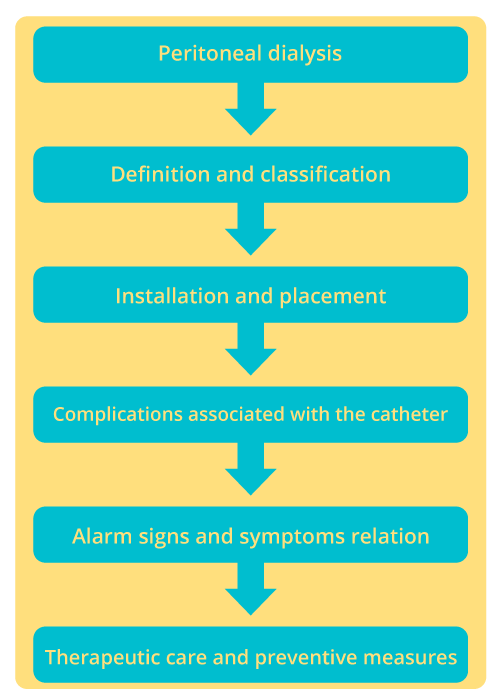
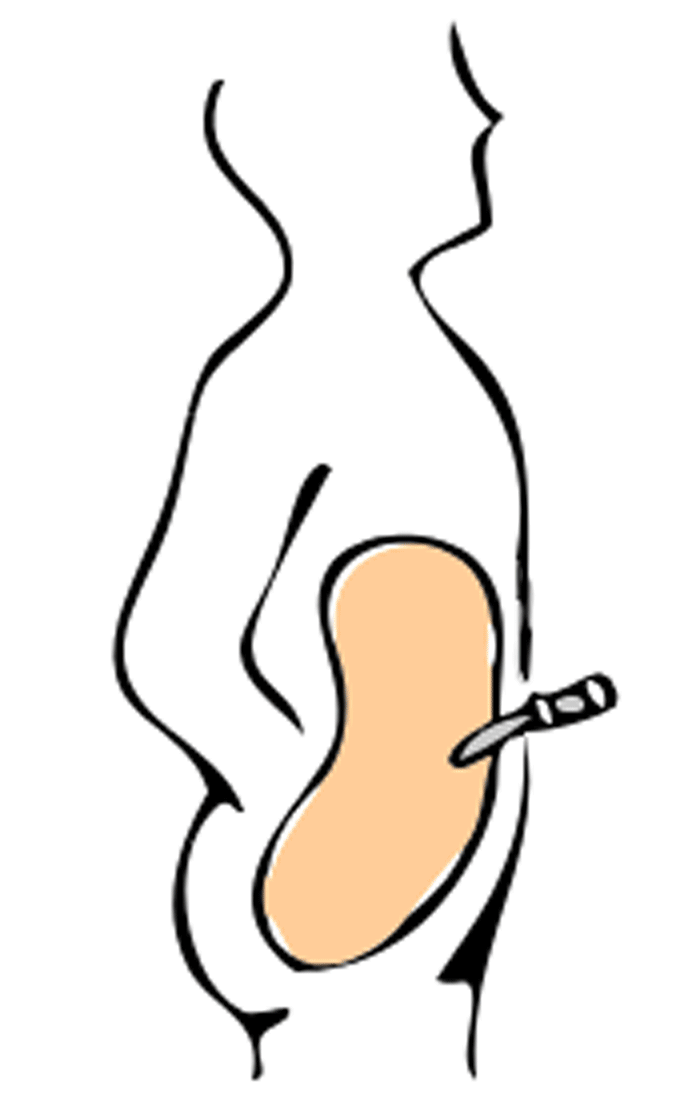
Wikipedia. (n. d.). Peritoneal Dialysis [image]. Retrieved from: https://en.wikipedia.org/wiki/Peritoneal_dialysis
The catheter used for the peritoneal dialysis (PD) is an essential piece to the performance of PD in its different modalities:
Click on the arrows to see the two modalities of DP.
Both modalities of PD are the means by which the dialysis solution is introduced into the peritoneal cavity of the person with Chronic Renal Failure (CRF). The use of catheters as a means of access to the peritoneal cavity dates from the creation of the polyvinyl catheter in 1959, with which it was sought to avoid folds and obstructions; however, its placement was difficult.
After various developments, in 1964, Palmer and Quinton present the PD catheter, designed with silicone, with a round tube structure, wide hole and in the distal part numerous holes. This catheter was improved in 1968 by Henry Tenckhoff, with the purpose of preventing infections and damage to the same.
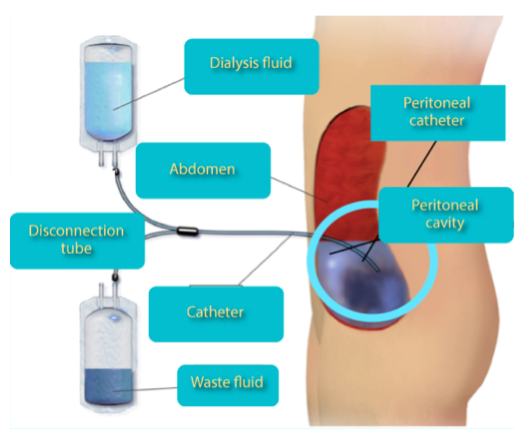
Classification
The types of catheter that are most commonly used for dialysis are:
Click on each classification to identify its composition:
It is the classic and most used from the market. The rest are variants with modifications in the intraperitoneal, intraparietal or external portion. This catheter has one or two cushions, although, for chronic dialysis, the second is used.

Smith, T. (1998)
This catheter allows the separation of the parietal and visceral layers of the peritoneum, the number of holes in the distal segment ensures a better infusion and draining.

Smith, T. (1998)
This catheter has two perpendicular silicone discs in the final section to separate the omentum and the intestine from the holes. It has a deep cuff that presents a Dacron disc; As you can see in the figure, it is designed to minimize leaks and fix the catheter in the right place. Next to this disc, it has a silicone pellet to allow the catheter to trap the peritoneum and the posterior fascia between the disc and the pellet, leaving the cuff or inner dacron inside the rectus abdominis muscle; This is a different method of implantation than is done in the Tenckhoff catheter.

Smith, T. (1998)
It is similar to the Tenckhoff catheter, but has the same internal fixation as the Toronto catheter; In addition, so that the catheter does not migrate, it has a natural curvature of 45 degrees. Researchers at the University of Missouri designed a v-shaped catheter, called a catheter in a swan neck at an angle of 150 degrees between the two cuffs. This facilitates the direction of the intraperitoneal portion of the catheter towards the pelvis and the external portion, when exiting in a downward direction that, according to some studies, allows the decrease in the number of orifice infections, with respect to the lateral or ascending exit of others. catheters.
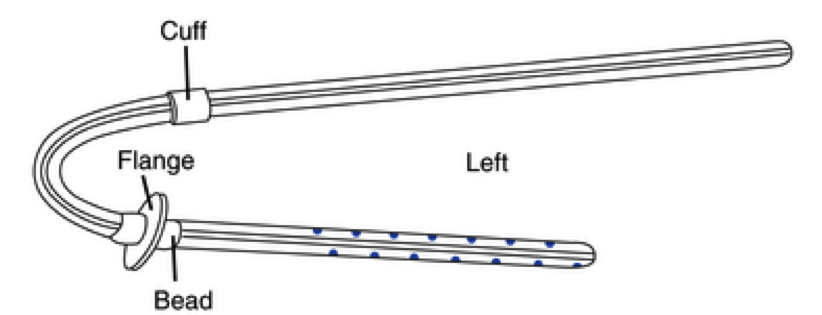
Smith, T. (1998)
The catheter consists of three well-defined segments.
Click on each portion of the Tenckhoff catheter to identify its characteristics:
Installation
The installation of a catheter in the peritoneal cavity is done through various techniques such as percutaneous and surgical. The latter is the safest, so that nursing care in the postoperative period are essential to start treatment and avoid complications that affect the expected benefits of replacement therapy, such as catheter migration. Said installation guarantees the most precise location and avoids the migration of the catheter in the peritoneal cavity, which becomes an obstacle for the infusion and drainage of the dialysis solution due to the bad placement of the abutment. Peritonitis can be another complication; however, there is always the possibility of removing the catheter.
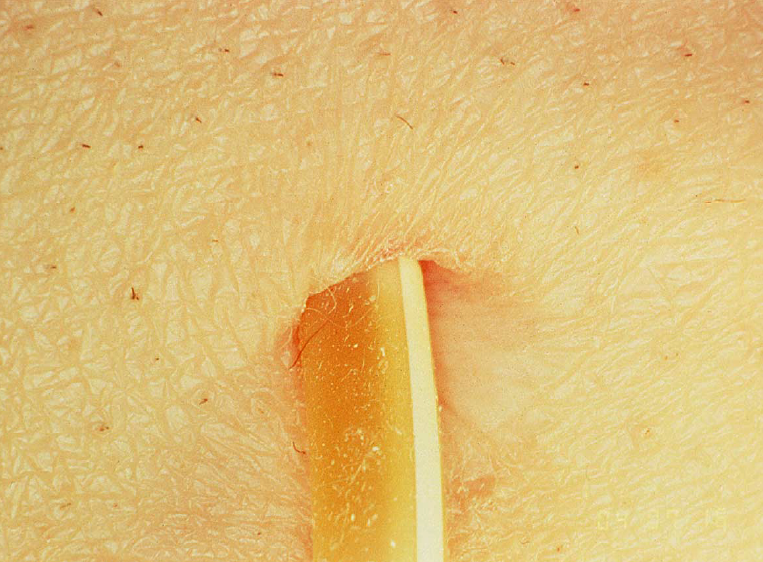
Techniques
There are several techniques for catheter placement, such as the following:
Click on each placement technique to review the description of each one:
Placement
In order to detect any alteration, the catheter should be followed up permanently, once installed. In general terms, complications are identified when dialysis treatment begins, so the nursing assessment is substantial to keep the system closed and provide care at the catheter exit site.
In open surgery, a range of between two to six weeks of healing is considered; therefore, it is important to take care and follow up the scarring of the exit site and detect complications and start with peritoneal dialysis. It should be mentioned that the catheter can remain in a cavity for two to five years; however, on average, their stay is two in our national context, since it depends on the care received.
To start the PD, the catheter is connected to a metallic connector and, later, to a transfer line, which must be changed every six months by the nursing staff, using aseptic technique. The PD system is permanently closed by a cap that is replaced by a new one every time dialysis is performed.
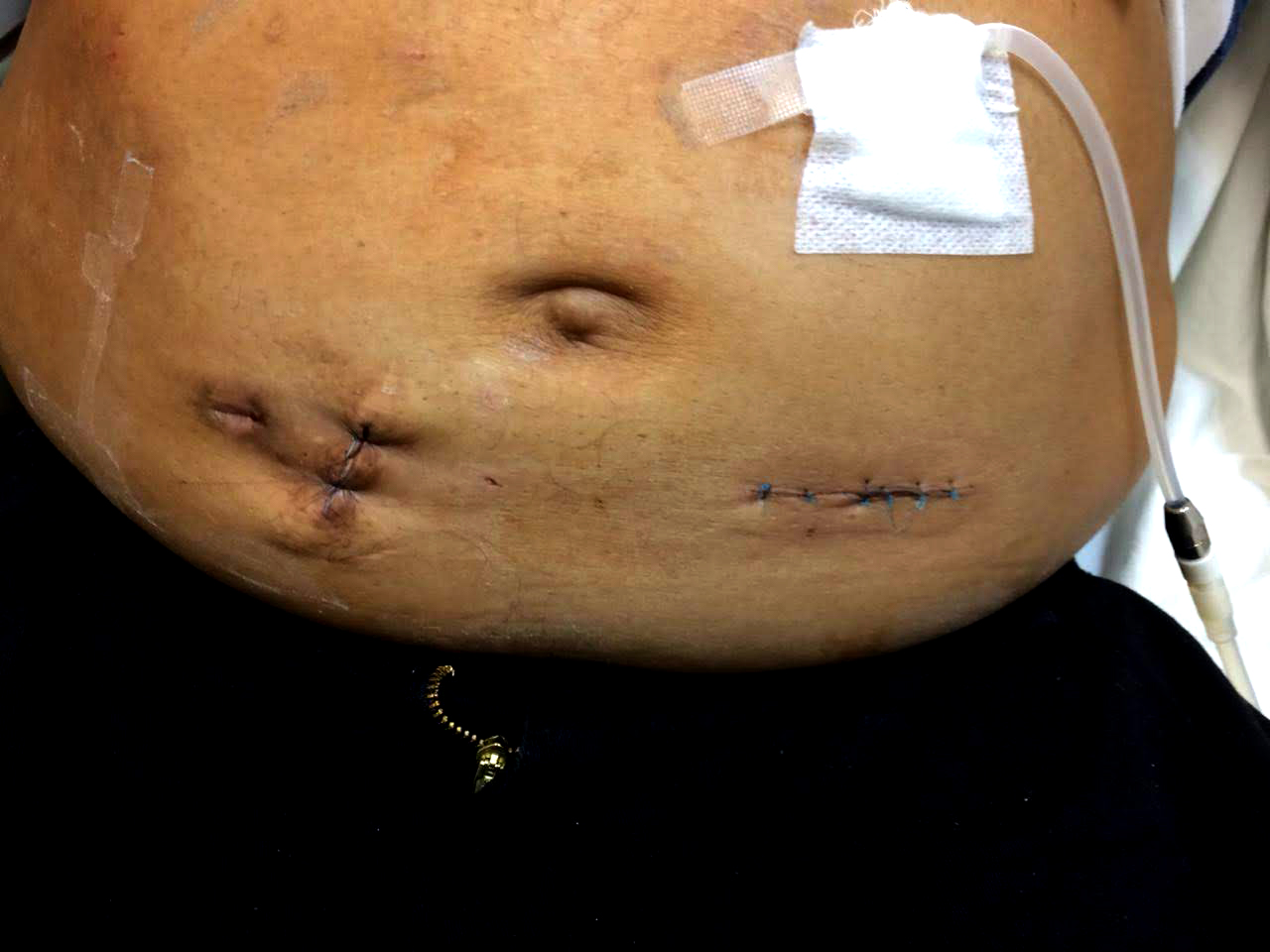
Jiménez Mendoza. ENEO. 2018
Location / journey
The Tenckhoff peritoneal catheter is placed deep in the peritoneal cavity according to the scheme, suturing the abdominal musculature, in order to fix it and avoid migration in chronic PD.
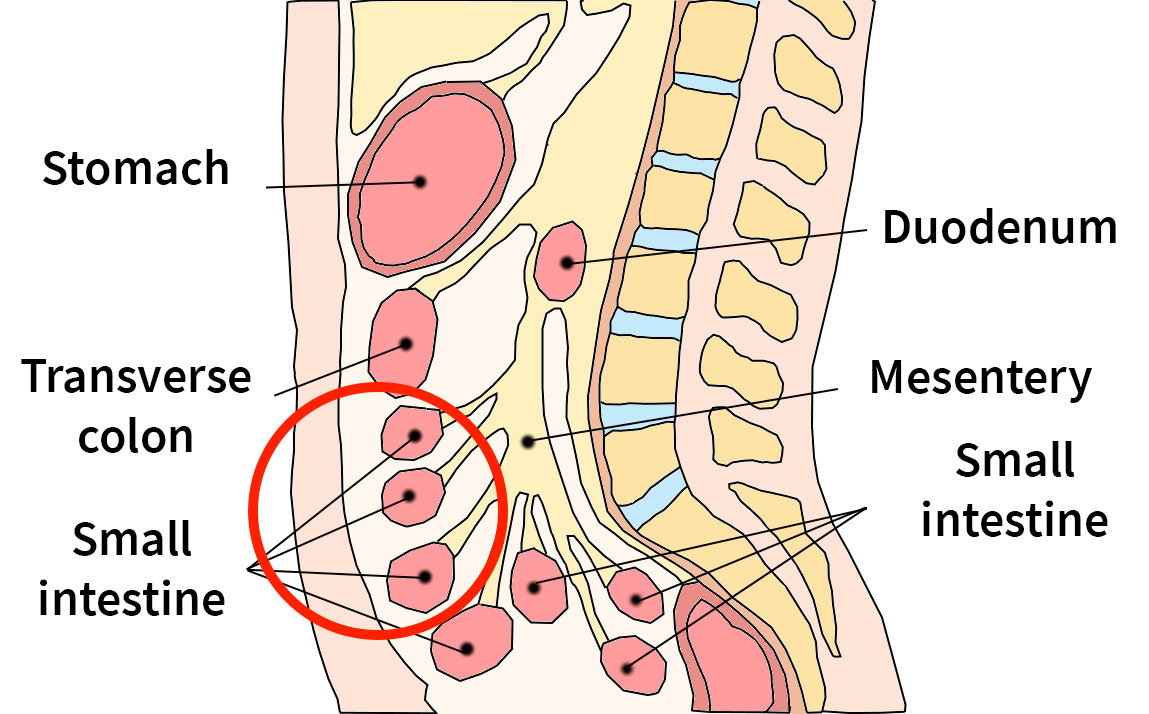
Wikipedia. (n.d.). Mesenterium [image]. Retrieved from:
https://upload.wikimedia.org/wikipedia/commons/f/fd/Esquema3.png
Among the signs and symptoms that may arise due to the installation, permanence or removal of the catheter, it is very important to recognize those that alert us to a possible infection. In most cases, it is usually a reason to stop the treatment and remove the catheter. Some of the important signs and symptoms are:
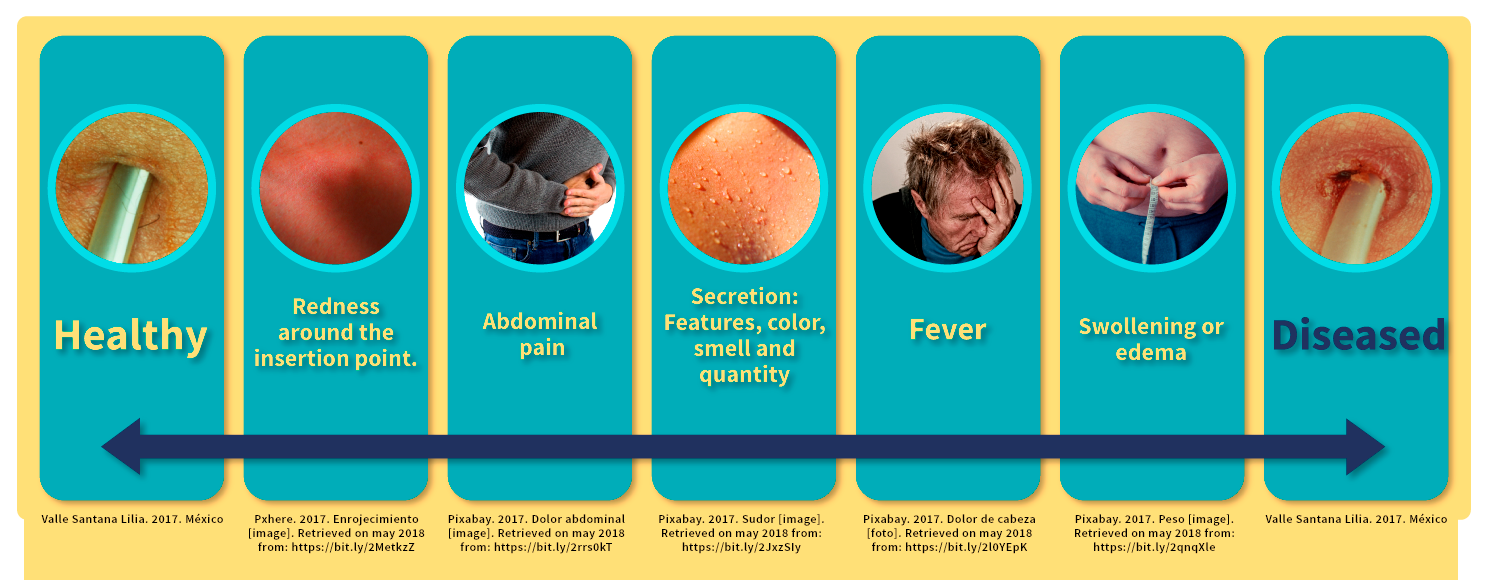
If the person reports or notes any of these symptoms, it is likely that an infection is developing, of which it is important to communicate to the trained nursing staff.
Characteristics of the insertion site
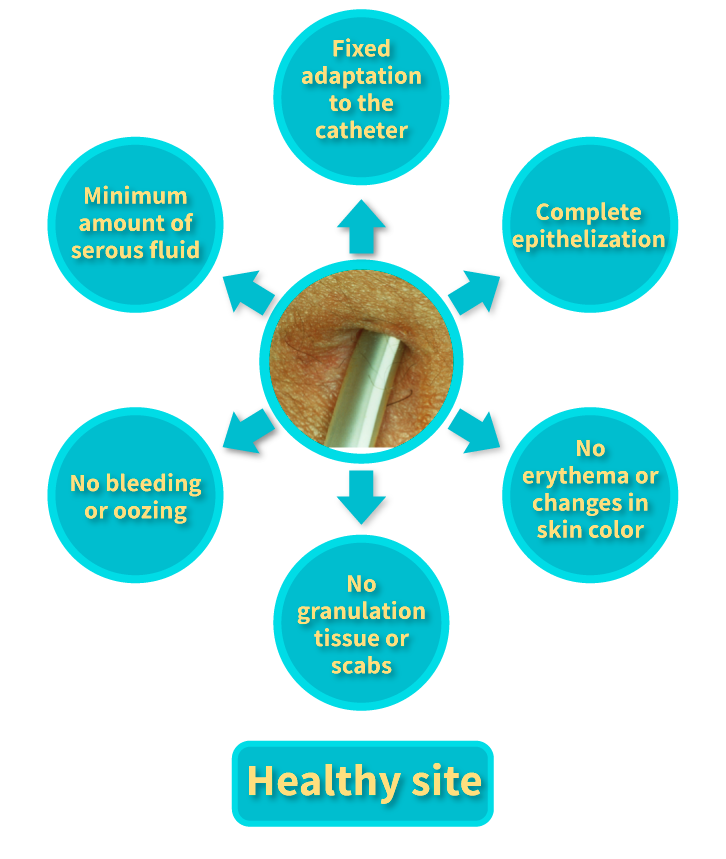
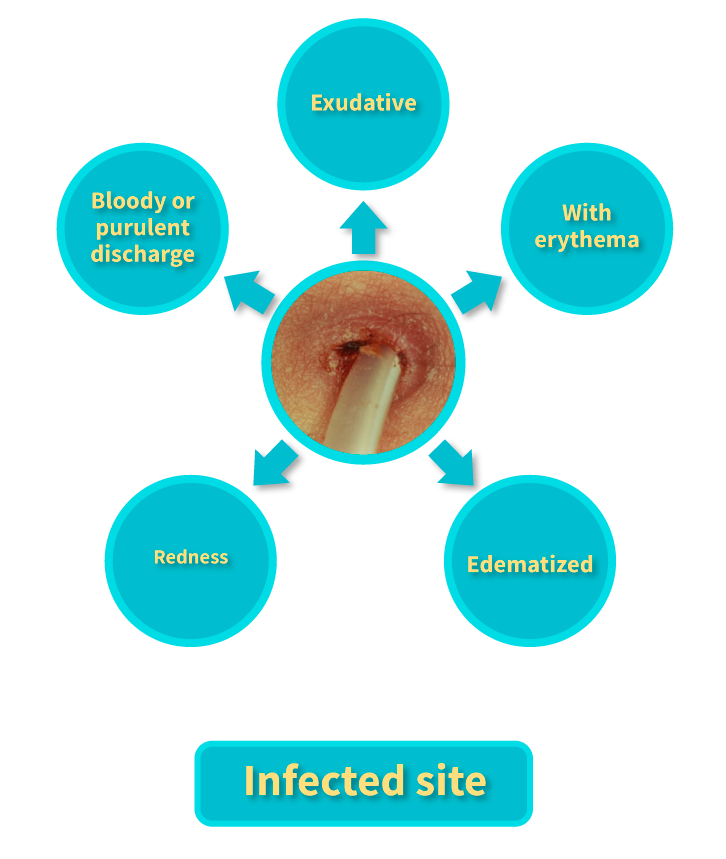
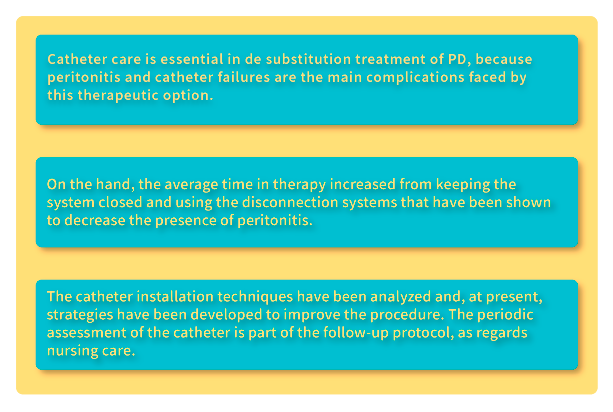
Care for the catheter in the installation
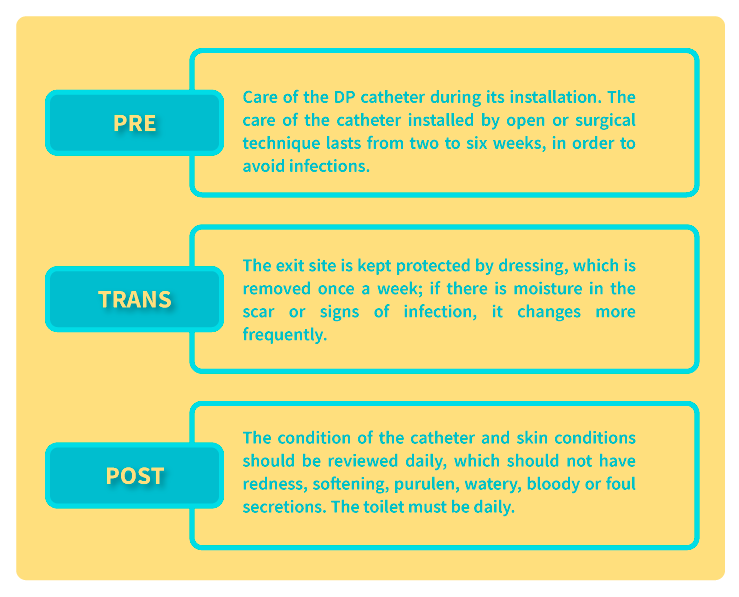
Some recommendations
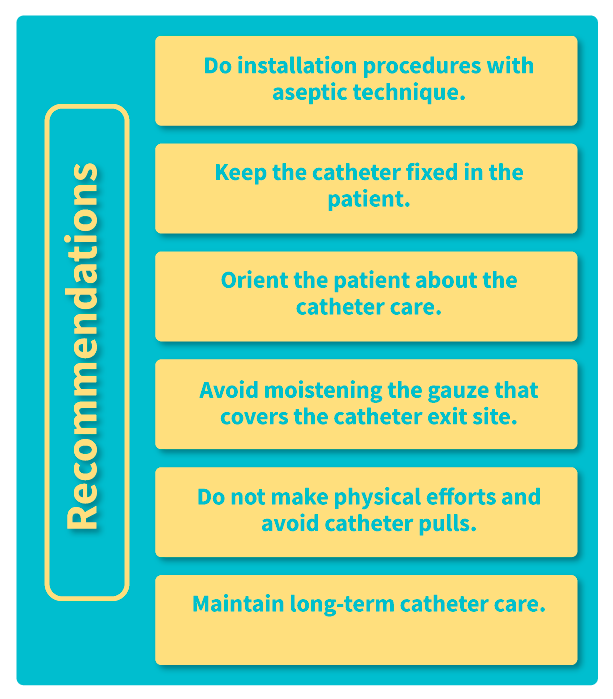
Patient education
Some essential points for the care of the catheter and its insertion site, that help us prevent complications and allow us to keep the catheter route accessible, are:
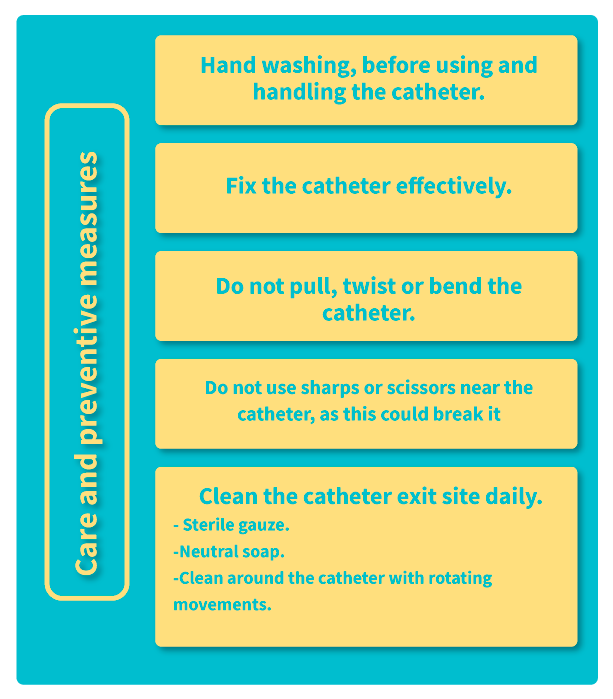
Types of complications
The main complications are related to catheter settlement, fluid leakage and infections.
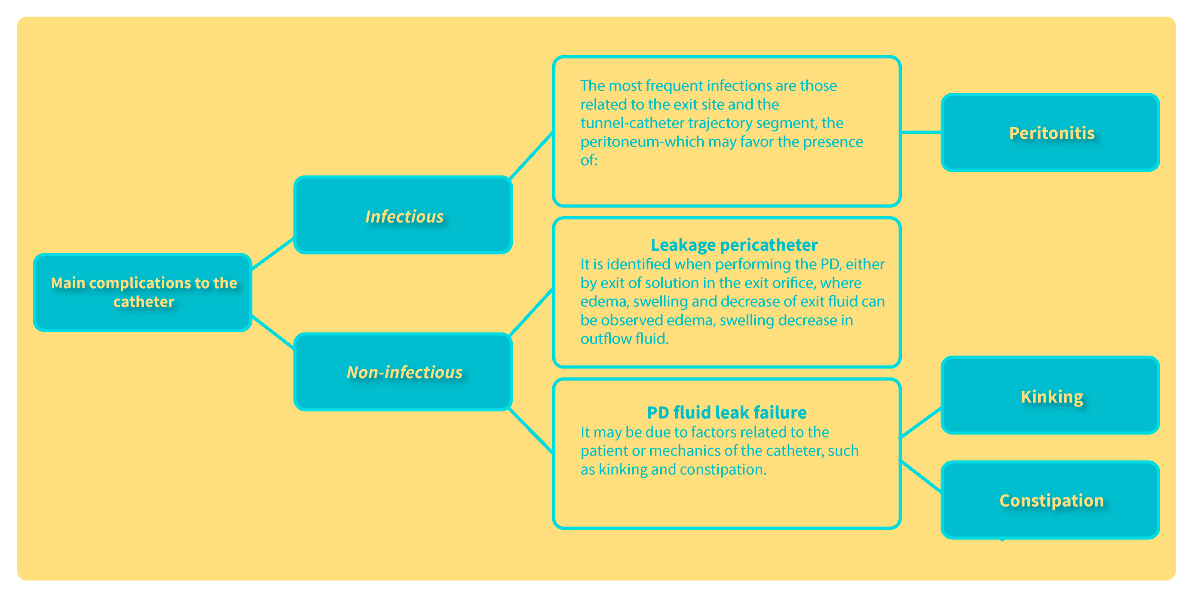

The Tenckhoff catheter has been the means of access to PD substitution treatment; however, there is a possibility that complications associated with the catheter may occur, such as:
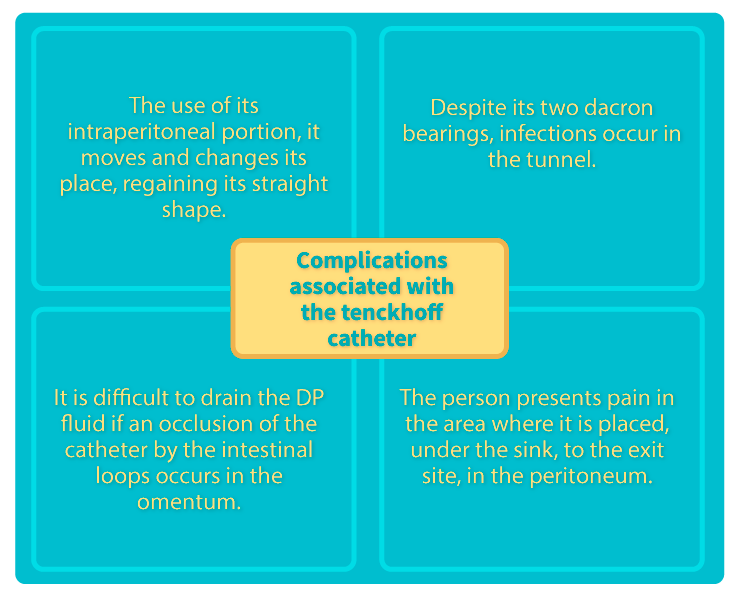
Due to this situation, catheter proposals have been generated, such as the pig tail, which fulfill the following intentions:
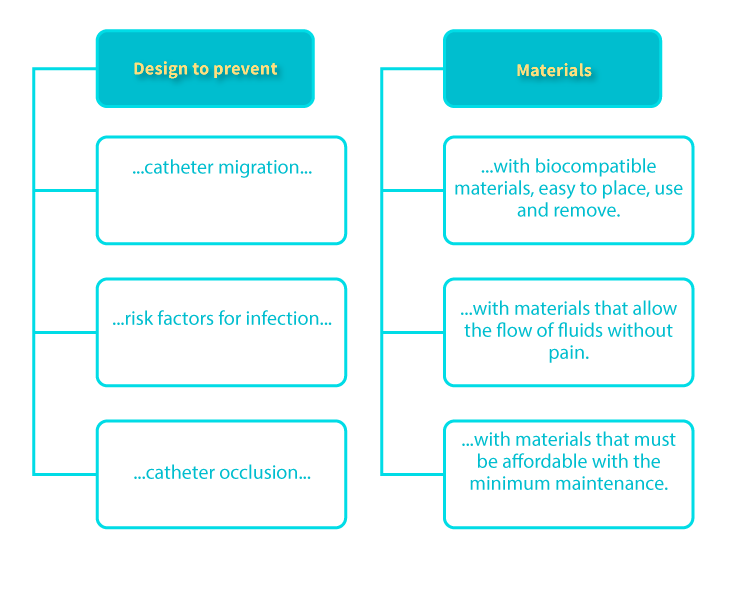
The catheter for peritoneal dialysis (PD) needs a correct installation and placement to avoid complications to the patient during the treatment.
According to the classification and composition of the DP catheter, relate each part with the corresponding description by dragging the correct option to the blank space in the sentences.
When you finish, you can recognize the composition of the catheter for PD and, thus, detect any possible dysfunction.
There is a diversity of situations that you will face if the necessary care is not taken to the catheter, from its installation to the verification of its procedure.
Carefully review the following case, so that you can detect in a timely manner the signs and symptoms that may appear during a treatment.
After reviewing the case click on the correct answer for each question.
Information sources
Bibliography
Martín, J. L. (2006). Catéteres peritoneales. Tipos de catéteres. Protocolo de implantación de catéteres peritoneales del grupo de DP de Andalucía. Revista Oficial de la Sociedad Española de Enfermería Nefrológica. Retrieved on June 17, 2018 from: http://www.revistaseden.org/files/TEMA%205.%20CATETERES%20PERITONEALES.pdf
Electronic documents
Castro, J. E. (2014, april-june). Colocación de catéter central subclavio mediante abordaje infraclavicular modificado. Revista Mexicana de Anestesiología, 37(sup. 1), s352-s358. Retrieved on april 10, 2018 from: http://www.medigraphic.com/pdfs/rma/cma-2014/cmas141cr.pdf
García, E., Vera, M., Corral, J. M., Mallafré, J. M. y Alcaraz, A. (2010). Colocación de catéter de diálisis peritoneal por laparoscopia: descripción y resultados de una técnica propia de dos puertos. Revista Nefrología, 30(3), 354-359. Retrieved on june 17, 2018 from: http://scielo.isciii.es/pdf/nefrologia/v30n3/nota2.pdf
Méndez, A., Chavira, P., Martínez, C., Orozco, P. y Godoy, A. (2007, september-october). La colocación percutánea de catéter de Tenckhoff, una técnica ideal para el inicio de diálisis peritoneal. Revista de la Facultad de Medicina de la UNAM, 50(5), 204-207. Retrieved on june 17, 2018 from: http://www.medigraphic.com/pdfs/facmed/un-2007/un075d.pdf
Méndez-Durán, A. (julio 2010). Implantación percutánea del acceso peritoneal crónico. Experiencia mexicana. Diálisis y transplante. Vol.31. Núm.3. Pp. 67-119. Retrieved on may 2019 from: https://www.elsevier.es/es-revista-dialisis-trasplante-275-articulo-implantacion-percutanea-del-acceso-peritoneal-S1886284510000111
Smith, T. (1998). Peritoneal dialysis and home dialysis therapies. Nurse key. Fastest nurse insight engine. Retrieved on june 17, 2018 from: https://nursekey.com/peritoneal-dialysis-and-home-dialysis-therapies/
How to quote
Jiménez, A., Escalona, M. A., Tapia, B. y Flores, C. (2018). Peritoneal Dialysis Catheter. Unidades de Apoyo para el Aprendizaje. CUAED/ENEO-UNAM. Retrieved on (date) from (link)